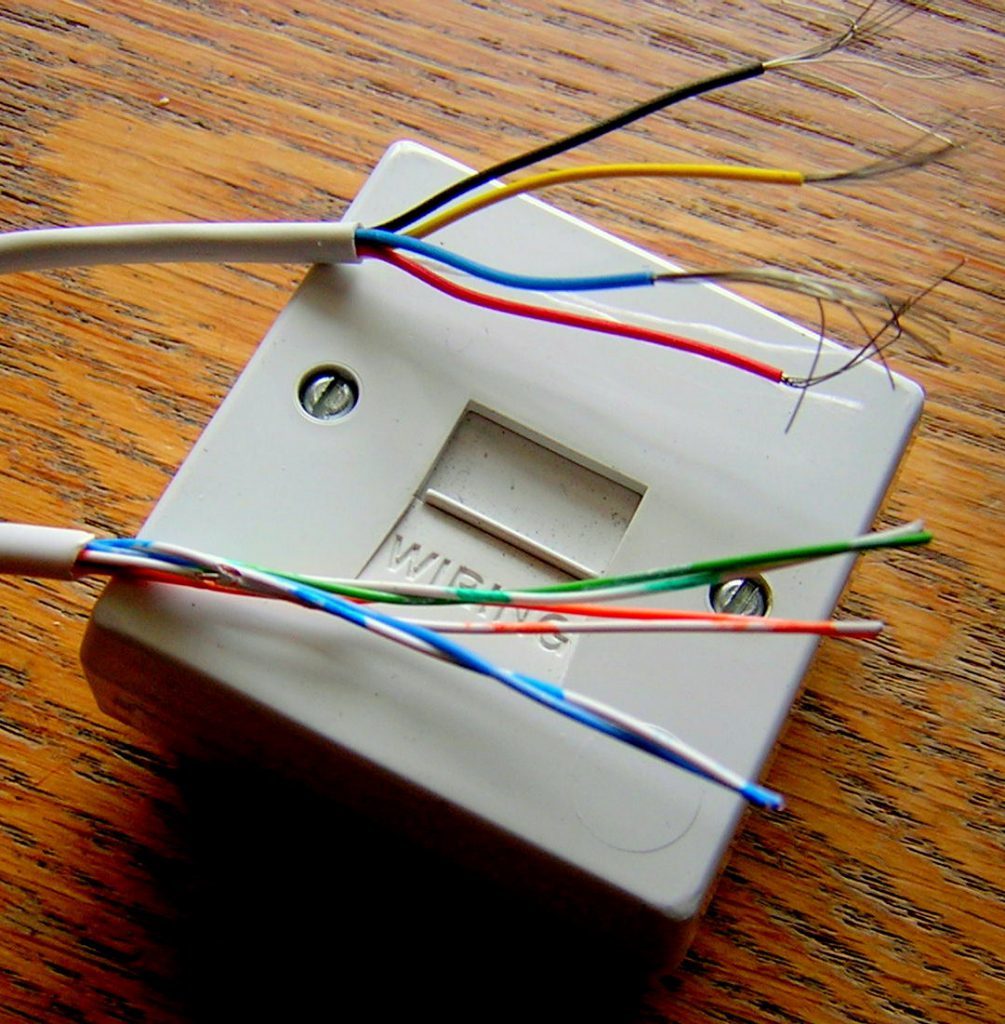I’m often asked about phone extension wiring, usually when folks don’t want move their master socket .
Elsewhere I’ve blogged on how to connect phone extension wiring together. But not on the importance of choice of cable.
You might have “Superfast Broadband” to your premises, but this won’t mean anything if it’s slowed down by sub-standard phone extension wiring.
Some suggestions:-
All Cables Are Not The Same.
Just because it makes a circuit and gives you a dial tone does not mean it’s suitable. Broadband pushes non-fibre technology to its limits – it needs the very best in cable.
Solid Copper Core. Not Stranded.
“Stranded” cable is made up of small copper or steel strands – see our photo above. Broadband signals hate it. It attracts interference. It does not connect easily or reliably in professional-grade jointing devices. Burglar alarm wiring uses it extensively, but that does not have to carry ultra-rapid data signals, just simple voltage. Most professional jointing equipment uses a “punch-down” method of connection known as IDC (Insulation Displacement Connection). This only works well on solid copper cable, not stranded. So don’t use it.
Not Everything that Looks Like Copper, is Copper.
Some cheap cable is aluminium, coated with copper, and called CCA, (copper-coated aluminium). It does not carry signals as well as pure copper cable. It breaks easily, and causes infuriating, time-consuming intermittent faults. The copper rubs off at the joints, allowing corrosion to form. BT used this in their network in the 1970s during a copper shortage, and are still suffering the consequences 40 years later. Look for “CCA” on the outer sheath. It will look like copper on the outside, but the core will be a dull silver colour. Like aluminium, coated in copper, in fact.
The Twist, and Why It Matters.
Electrical signals on a pair of wires can “talk” to each other magnetically and slow each other down, usually when laid side by side over a distance. Professional-grade cable has a twist incorporated into each pair of cables – see our photo above.. This minimises interference “crosstalk”. I have seen broadband speed increase significantly by replacement of a flat under-carpet cable. We replaced it with proper solid core twisted pair cable run along a skirting board. The speed went up right away.
Please Tell Me – What Do The Professionals Use?
A search on eBay for CW1308 will lead to the proper stuff. CW1308 is a BT-specification number for the cable they use for voice and broadband cabling. Some eBay traders are selling it by the length, which is very useful if you don’t need a 50 metre drum. Furthermore, a former BT subsidiary formerly called BT Cables (and now renamed British Cables Company) actually supply it, so you can get the very same stuff that BT/Openreach use, via eBay or trade wholesalers. If you’re buying anything else, simply check that it is “twisted-pair”, pure copper, and solid core.
What About Cat 5 Data Cable?
Cat 5 network cable is also suitable, providing it’s not CCA. It’s just a bit awkward to terminate in telephone sockets, as it’s 4-pair cable in a large sheath. It’s designed for data sockets.
If you value your broadband speed…
…don’t carry out phone extension wiring with anything less that the proper stuff. Or get me in to replace it if you’ve inherited it.
